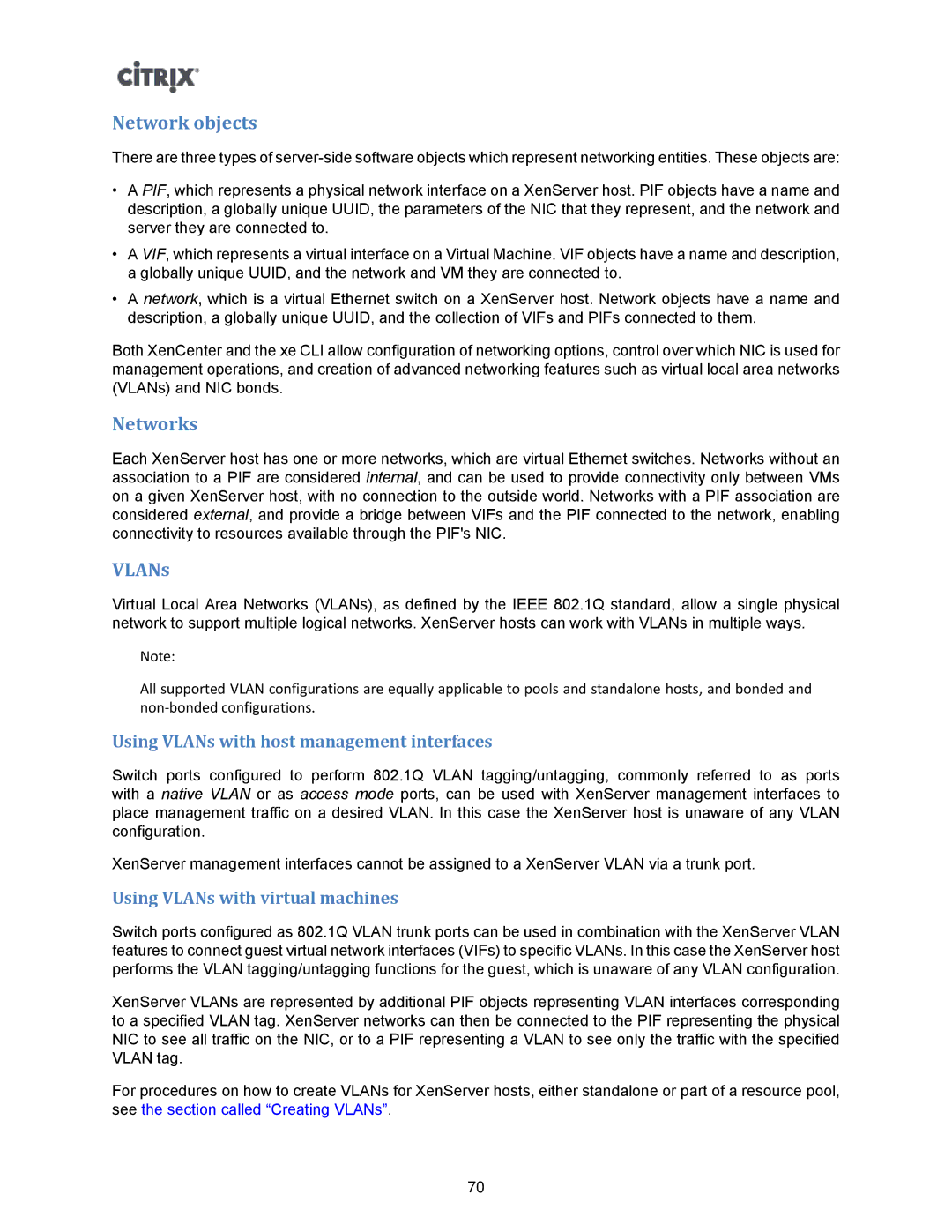Network objects
There are three types of
•A PIF, which represents a physical network interface on a XenServer host. PIF objects have a name and description, a globally unique UUID, the parameters of the NIC that they represent, and the network and server they are connected to.
•A VIF, which represents a virtual interface on a Virtual Machine. VIF objects have a name and description, a globally unique UUID, and the network and VM they are connected to.
•A network, which is a virtual Ethernet switch on a XenServer host. Network objects have a name and description, a globally unique UUID, and the collection of VIFs and PIFs connected to them.
Both XenCenter and the xe CLI allow configuration of networking options, control over which NIC is used for management operations, and creation of advanced networking features such as virtual local area networks (VLANs) and NIC bonds.
Networks
Each XenServer host has one or more networks, which are virtual Ethernet switches. Networks without an association to a PIF are considered internal, and can be used to provide connectivity only between VMs on a given XenServer host, with no connection to the outside world. Networks with a PIF association are considered external, and provide a bridge between VIFs and the PIF connected to the network, enabling connectivity to resources available through the PIF's NIC.
VLANs
Virtual Local Area Networks (VLANs), as defined by the IEEE 802.1Q standard, allow a single physical network to support multiple logical networks. XenServer hosts can work with VLANs in multiple ways.
Note:
All supported VLAN configurations are equally applicable to pools and standalone hosts, and bonded and
Using VLANs with host management interfaces
Switch ports configured to perform 802.1Q VLAN tagging/untagging, commonly referred to as ports with a native VLAN or as access mode ports, can be used with XenServer management interfaces to place management traffic on a desired VLAN. In this case the XenServer host is unaware of any VLAN configuration.
XenServer management interfaces cannot be assigned to a XenServer VLAN via a trunk port.
Using VLANs with virtual machines
Switch ports configured as 802.1Q VLAN trunk ports can be used in combination with the XenServer VLAN features to connect guest virtual network interfaces (VIFs) to specific VLANs. In this case the XenServer host performs the VLAN tagging/untagging functions for the guest, which is unaware of any VLAN configuration.
XenServer VLANs are represented by additional PIF objects representing VLAN interfaces corresponding to a specified VLAN tag. XenServer networks can then be connected to the PIF representing the physical NIC to see all traffic on the NIC, or to a PIF representing a VLAN to see only the traffic with the specified VLAN tag.
For procedures on how to create VLANs for XenServer hosts, either standalone or part of a resource pool, see the section called “Creating VLANs”.
70
